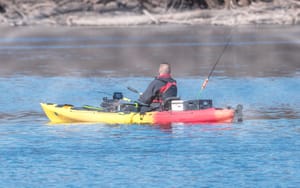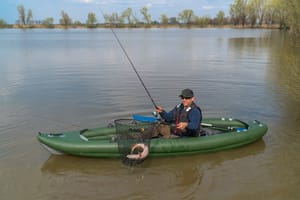When it comes to walleye fishing, having the right gear can make all the difference between a successful outing and coming home empty-handed. One of the most critical components of your gear is the fishing rod, and more specifically, the rod power. But what rod power is best for walleye? This article will delve into the nuances of choosing the perfect rod power for targeting this popular game fish.
Key Takeaways:
- Understanding rod power is crucial for effectively targeting walleye.
- Medium-light to medium rod power is generally best for walleye fishing.
- The choice of rod power should also consider lure weight, fishing technique, and personal preference.

Understanding Rod Power and Action
Before we can determine the best rod power for walleye, it's essential to understand what rod power and action mean. Rod power refers to the rod's resistance to bending under pressure. It ranges from ultra-light to heavy, with several categories in between. Rod action, on the other hand, describes where the rod bends. Fast action rods bend near the tip, while slow action rods bend closer to the handle.
For walleye fishing, the right combination of rod power and action can help you feel the bite, set the hook properly, and fight the fish with control. A medium-light to medium power rod with a fast action is often recommended for walleye because it provides a good balance of sensitivity and backbone for hooksets.
The Ideal Rod Power for Walleye Techniques
Different walleye fishing techniques may require variations in rod power. For jigging, a medium-light power rod with a fast action tip is ideal, as it offers the sensitivity needed to detect light bites and the strength for a solid hookset. When trolling, a medium power rod with moderate action can absorb the shock of strikes and handle larger lures or diving devices.
It's important to match the rod power to the technique to maximize your chances of success. A rod that's too light may not handle the fight of a larger walleye, while one that's too heavy can make detecting bites more challenging.
Lure Weight and Rod Power Selection
The weight of the lures you plan to use is another critical factor in selecting the right rod power for walleye fishing. Each rod is designed to cast a specific range of lure weights efficiently. Medium-light rods are typically suitable for lures weighing 1/16 to 3/8 ounces, which covers many popular walleye jigs and small crankbaits.
Using a rod within its recommended lure weight range ensures optimal casting performance and sensitivity. If you frequently switch between light jigs and heavier rigs, you may need more than one rod to cover all your bases.
Seasonal Considerations for Walleye Rod Power
Seasonal changes can influence walleye behavior and, consequently, your choice of rod power. In spring and fall, when walleye are often found in shallower waters, a medium-light rod can provide the finesse needed for lighter lures and slower presentations. During summer and winter, when walleye may be deeper and less active, a medium power rod can handle heavier lures and more aggressive tactics.
Adapting your rod power to the seasons can improve your catch rates by aligning your gear with walleye feeding patterns and habitat preferences.
Personal Preference and Comfort
Ultimately, the best rod power for walleye also depends on personal preference and comfort. Some anglers prefer a lighter rod for the challenge and the enhanced ability to feel subtle bites. Others may opt for a slightly heavier rod for extra control and power.
When choosing a rod, consider how it feels in your hands and whether it suits your fishing style. Comfort can significantly affect your performance and enjoyment on the water.
The Role of Rod Material
The material of the rod also plays a role in determining the best power for walleye fishing. Graphite rods are known for their sensitivity and fast action, making them a popular choice for detecting light walleye bites. Fiberglass rods, while generally less sensitive, offer more durability and a parabolic bend that can be advantageous for certain techniques.
Selecting a rod material that complements the power and action you need for walleye will enhance your overall fishing experience.
Summary
Choosing the right rod power for walleye involves considering the fishing technique, lure weight, seasonal patterns, and personal preference. Medium-light to medium power rods with fast action tips are generally the best choice for most walleye fishing scenarios. However, the ideal rod power may vary based on specific conditions and angler comfort. By understanding these factors and selecting a rod that fits within them, you'll be well-equipped to target walleye effectively. Boost your walleye fishing success by checking out our guide to the Best Walleye Rod - Top 5 for 2024, complete with tips and techniques to elevate your angling game!
FAQ Section
Can I use a medium-heavy rod for walleye fishing?
While a medium-heavy rod can be used for walleye, especially when targeting large fish or using heavy lures, it may not provide the sensitivity needed for detecting lighter bites. A medium-light to medium power rod is typically more versatile for various walleye fishing techniques.
Is a longer or shorter rod better for walleye fishing?
The length of the rod should be chosen based on the fishing technique and the environment. Longer rods (over 7 feet) are great for casting farther distances and trolling, while shorter rods (around 6 to 6.5 feet) offer better maneuverability for jigging and fishing in confined spaces.
How important is rod action when choosing a rod for walleye?
Rod action is very important when choosing a walleye rod. A fast action rod is generally preferred because it provides the sensitivity to detect bites and the stiffness needed for a quick and effective hookset.



